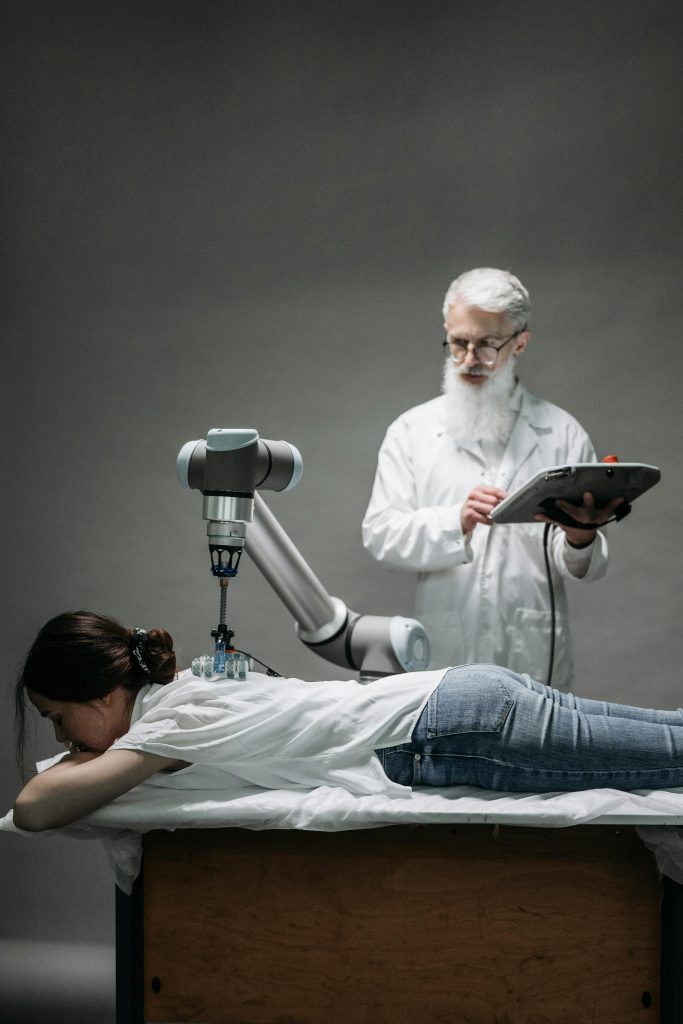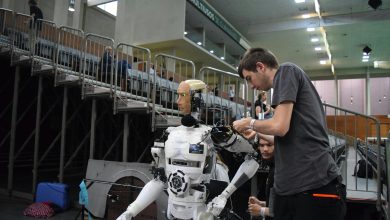The Rise of AI Assistants: Taking Our Productivity to New Heights

Table of Contents
- 1 Introduction
- 2 Early Beginnings
- 3 Technological Advancements
- 4 Modern Artificial Intelligence Assistants
- 5 Impact on workplace productivity
- 6 Improving collaboration
- 7 Data Management and Analysis
- 8 Customer service
- 9 Key Technologies that Drive AI Assistants
- 10 Machine Learning
- 11 Speech Recognition.
- 12 Computer Vision
- 13 Education
- 14 Smart homes
- 15 AI Assistants’ Future: Continued Integration.
- 16 Improved personalization
- 17 Ethical Concerns
- 18 Advanced Capabilities
- 19
Introduction
In an age when time is our most valuable asset, AI helpers are changing the way we work and live. These digital assistants, backed by advanced AI, are increasing efficiency across a variety of industries by managing calendars, automating chores, and providing personalized support. Explore the evolution of AI assistants, their impact on productivity, and the promising future they hold.
Early Beginnings
The path of AI assistants began in the mid-20th century, but it wasn’t until the 21st century that we saw versions similar to today’s AI helpers. Microsoft’s Clippy, an animated paperclip released in 1996, was one of the earliest attempts to include a digital assistant into everyday applications. Despite its limited powers and much criticized intrusiveness, Clippy set the framework for future advancements. Siri, released in 2011, was a huge step forward since it used natural language processing (NLP) to interpret and answer to user inquiries. Siri’s capacity to make reminders, send texts, and answer queries exemplified AI’s promise for increasing personal efficiency.
Technological Advancements
Machine learning, natural language processing, and neural networks have advanced AI assistants from basic command-followers to sophisticated intelligent agents. Deep learning models, which mimic the human brain’s information processing, have enhanced AI’s ability to understand and generate human-like replies. Companies such as Google, Amazon, and Microsoft have made tremendous advances in AI research thanks to large-scale datasets and greater computer capacity. These developments enable AI assistants to execute complicated interactions and decisions, going beyond fundamental functions.
Modern Artificial Intelligence Assistants
Today, artificial intelligence assistants such as Amazon’s Alexa, Google Assistant, and Apple’s Siri are indispensable in our daily lives. These assistants do anything from create reminders and send messages to controlling smart home gadgets and making personalized recommendations. Amazon’s Alexa, which debuted in 2014, rose to prominence thanks to its connection with the Echo, a smart speaker that controls home automation systems, plays music, and delivers on-demand information. Google Assistant, which was released in 2016, takes advantage of Google’s massive knowledge graph and search capabilities, making it one of the most knowledgable and contextually aware AI assistants accessible. These current AI helpers are always evolving, including new features and integrations that improve their capabilities.

Photo by Pavel Danilyuk from Pexels: https://www.pexels.com/photo/a-scientist-testing-a-device-8439172/
Time Management.
AI assistants are particularly good at assisting users with time management. They plan meetings, issue reminders, and send real-time notifications to ensure that essential activities are not forgotten. AI helpers free up time for more important activities by performing administrative tasks. Google Assistant works with Google Calendar to automatically arrange meetings based on availability, provide reminders, and recommend best meeting times.
Task Automation
Automation is one of the most important benefits of AI assistants. They automate repetitive processes like data entry, email sorting, and routine responses, saving time and minimizing human mistake. AI helpers organize emails into folders based on their content, highlight key communications, and archive less important ones. Businesses utilize AI assistants to automate customer support inquiries, freeing up human agents to handle more complex issues.
Personalized assistance
Machine learning algorithms are used by AI assistants to learn user preferences and behaviors and then provide tailored recommendations and reminders. They indicate the optimal times for concentrated work based on previous behavior and track daily activities, providing individualized exercise and meal regimens. This level of personalization enables users to make more informed decisions that are in line with their productivity and wellness objectives.

Photo by Karolina Kaboompics from Pexels: https://www.pexels.com/photo/crop-anonymous-person-calculating-profit-on-smartphone-calculator-near-banknotes-4386321/
Help with Multitasking
AI assistants allow consumers to multitask more effectively by processing several demands at the same time. They listen to music while setting a timer, or they dictate a message while looking for information. This power enables users to achieve more in less time, both personally and professionally.
Impact on workplace productivity
Simplifying communication
AI assistants improve professional communication by organizing meetings, giving reminders, and transcribing meetings in real time. This simplification shortens coordination time and boosts overall team efficiency. AI assistants work with systems such as Microsoft Teams and Slack to automate meeting scheduling and give real-time transcription.

Photo by MART PRODUCTION from Pexels: https://www.pexels.com/photo/a-group-of-people-planning-while-looking-at-the-laptop-7550298/
Improving collaboration
AI assistants make cooperation easier by integrating with project management and communication systems. They monitor project progress, allocate tasks, and ensure deadlines are fulfilled, resulting in a cohesive and effective workplace. AI assistants deliver real-time updates and insights, allowing teams to make better decisions and optimize workflows.
Data Management and Analysis
AI assistants manage and analyze data, sorting through vast amounts of information, recognizing trends, and producing reports. This feature enables staff to make data-driven decisions more quickly, boosting productivity and strategic planning. AI assistants offer real-time analytics and monitoring, track key performance indicators, and automate data entry and validation.
Customer service
In customer service, AI assistants manage regular inquiries, provide immediate responses, and address issues without the need for human participation. This efficiency increases client satisfaction while freeing up human agents for more difficult jobs. AI-powered chatbots respond to frequent customer requests, evaluate user data, and make personalized recommendations.
Key Technologies that Drive AI Assistants
Natural Language Processing (NLP)
NLP allows AI assistants to comprehend and respond to human language. Advances in natural language processing (NLP) have increased the accuracy and intuitiveness of AI-generated responses, making interactions more natural. AI assistants manage complex queries, hold meaningful conversations, and provide extensive explanations of complex topics.
Machine Learning
AI helpers can learn and improve over time thanks to machine learning techniques. They use constant feedback to adapt to user preferences, foresee needs, and maximize performance. Machine learning allows AI assistants to make tailored recommendations, increase accuracy, and optimize performance.
Speech Recognition.
Speech recognition technology allows AI assistants to comprehend spoken orders and reply appropriately. This technology has advanced dramatically, enabling more precise and responsive speech interactions. AI assistants can communicate in a variety of accents and dialects, making them accessible to a global audience.
Computer Vision
Some artificial intelligence assistants include computer vision capabilities, which allow them to understand visual information. This technology is useful in security applications since AI can recognize faces and detect irregularities. Computer vision improves functionality by providing visual cues and direction.
AI Assistants in Action: Healthcare Case Studies.
AI assistants in healthcare monitor patient data, plan appointments, and offer virtual consultations. They evaluate patient data to detect trends and aid in diagnosis and therapy planning. AI helpers improve patient care by making tailored health suggestions and reducing administrative procedures.

Photo by Anna Shvets: https://www.pexels.com/photo/smiling-ethnic-lady-visiting-dentist-in-modern-clinic-3845548/
Education
AI helpers are transforming education by delivering tailored tutoring and support. They assist students with assignments, explain hard topics, and monitor academic progress. AI assistants improve classroom instruction, encourage lifelong learning, and promote professional development.
Finance
AI assistants aid with investment management, financial guidance, and the detection of fraudulent activity. They track industry trends, provide real-time data, and improve customer service. AI helpers detect fraud by analysing transaction data and reporting suspicious patterns.
Smart homes
Smart homes rely heavily on AI assistants to handle lighting, heating, and security systems. They make individualized recommendations, increase convenience, and improve energy efficiency. AI assistants improve the quality of life in smart homes.
AI Assistants’ Future: Continued Integration.
The future of AI assistants is dependent on their continuing integration with numerous devices and platforms. AI assistants will become more integrated into our daily lives, interacting with smartphones, vehicles, and household gadgets. This integration will give constant help while also improving consumers’ overall well-being.
Improved personalization
As AI assistants advance in sophistication, their capacity to tailor interactions will improve. Based on a better understanding of user behavior, they will make more accurate recommendations and offer preemptive support. Healthcare and education will benefit from enhanced personalization, with individualized health recommendations and learning experiences.
Ethical Concerns
Ethical considerations will become more significant as AI helpers grow more common. Data privacy, security, and potential biases in AI systems are all concerns that must be addressed. Companies must put in place solid data protection measures, assure transparency, and develop rules for the responsible use of AI assistants.
Advanced Capabilities
Future AI assistants will have more complex features, such as emotional intelligence and advanced problem-solving ability. These developments will allow them to offer comprehensive assistance in both personal and business situations. AI assistants will use developing technology to improve their performance and boost productivity and innovation.
As AI technology advances, the potential for AI helpers to improve our lives grows rapidly. By embracing this technology and tackling the accompanying moral issues, we can take advantage of AI’s power to create a more efficient, productive, and joyful future.




